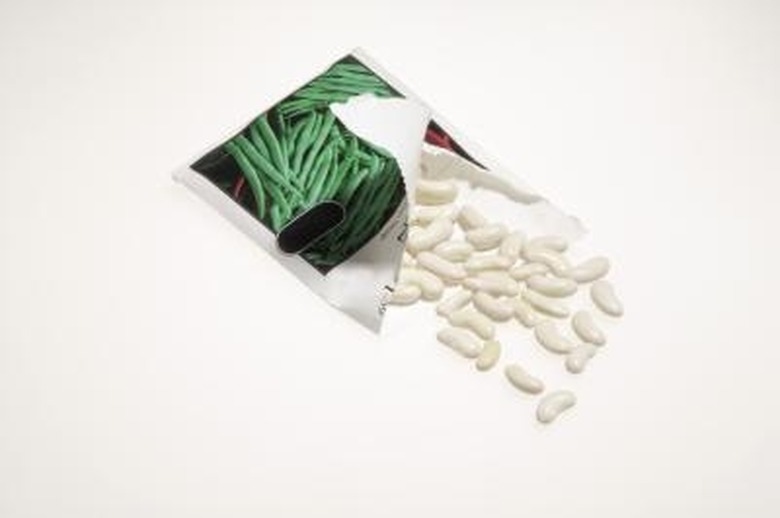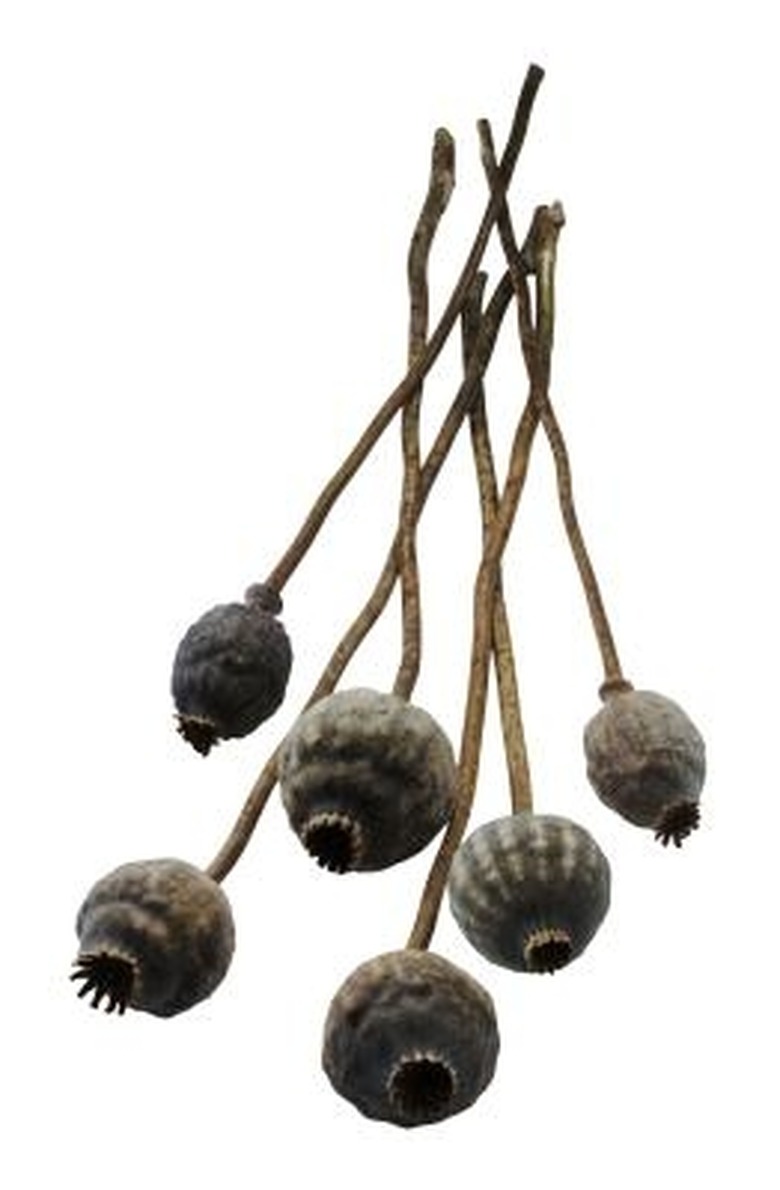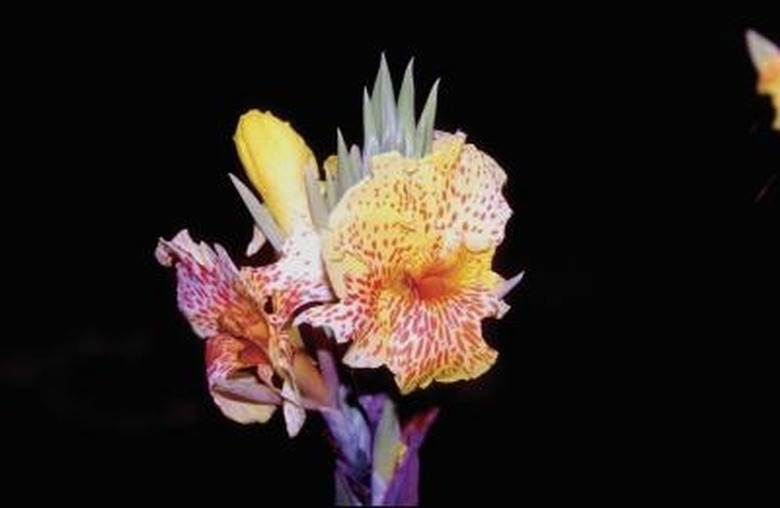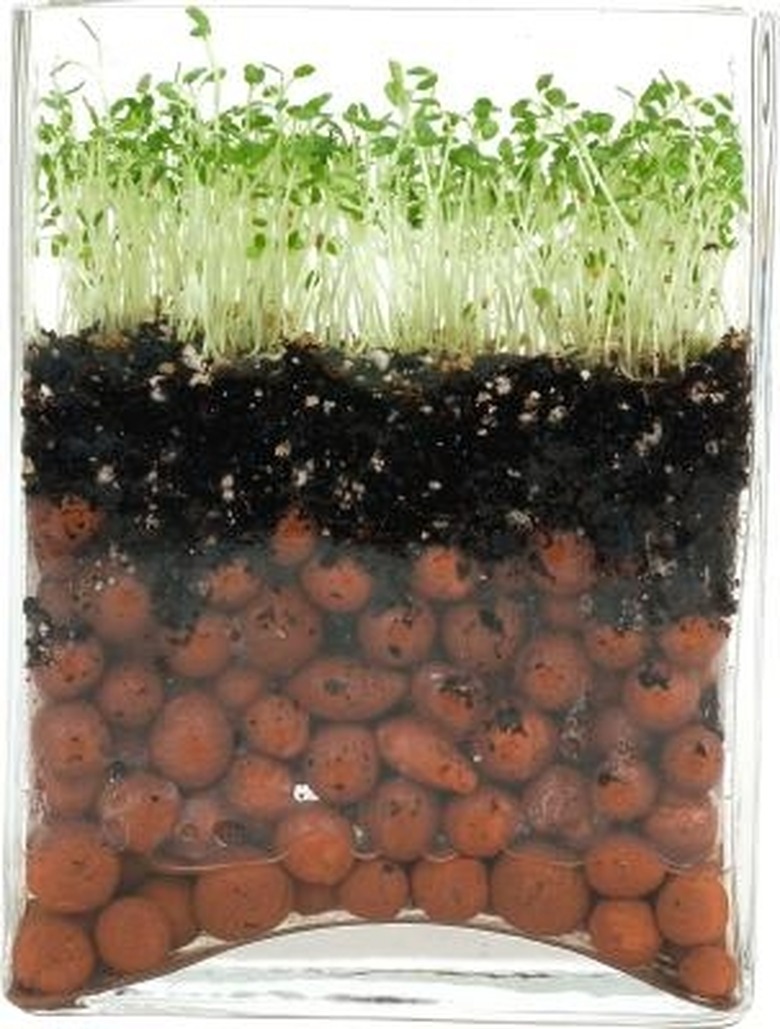The Importance Of Water In Seeds Germination
Plant seeds are encased within an outer shell of varying thicknesses. The shell protects the tiny embryo within from parasites, injury or extreme temperatures. Inside the shell also is the endosperm, the food that nourishes the embryo during its early stages of grown Seeds absorb water, activating the biochemical mechanisms required for germination and growth. After absorbing enough water, the embryo bursts the seed's outer shell and the small, growing plant emerges.
Seed Coat Thickness
Seed Coat Thickness
The hard shell or coating on some seeds is designed to prevent water from getting to the seed, thereby preventing the embryo inside from getting the water required to activate the growth mechanism. An example of a seed with a hard outer shell is the Kentucky coffee tree Gymnocladus dioica. Hard seed coats soften when soaked in water or when the soil is consistently moist, but unless there is some way to get water to the seeds, they may die before they ever germinate.
Thin seed coats eliminate the water barrier. Light penetrates the layers of thin plant tissue, and when the pigment phytochrome absorbs light, the embryo is altered in such a way that it emerges from the thin seed coating. Thin-coated seeds need water so that they can absorb nutrition from soil.
Nicking Seed Coats
Nicking Seed Coats
Scarification is the process of nicking hard-coated seeds to remove a small part of the outer shell. This allows water to enter the area and reach the embryo. The more water the embryo absorbs, the more it swells, ultimately bursting the entire hard outer shell upon germination. Nicking also makes it possible to see whether a seed is viable, because viable seeds appear white under their coating. If no white is visible after nicking a seed, the seed is not viable. Seeds that are nicked should germinate within two weeks; without nicking, they might never germinate.
Insufficient Seed Development
Insufficient Seed Development
When embryos haven't fully developed, seeds must mature further before the embryo can sprout. Without stored nutrients inside the seed, it can't develop. Orchid seeds are no larger than dust particles and only have one embryo inside each seed. These embryos need the nourishment of something like soil fungi to aid in development until they can penetrate the seed coating. Water allows the seeds to absorb nutrients from soil fungi, but it also softens the seed coating. Because these seeds have limited viability, the inside embryo will die without fast connection between the soil fungi and seed, a process made possible by water.
How Germination Occurs
How Germination Occurs
The first sign of germination is the absorption of lots of water, activating the metabolic functions needed for germination and growth. After absorbing enough water, the embryo grows too large for the seed and bursts the outer shell; a small plant emerges. The root tip is the first part of the embryo to emerge and it anchors the seed to the soil, allowing the embryo to continue to absorb nutrients and water from the soil. Because new embryo roots need water, plant seeds deeper in soil during the hottest part of summer. This allows the seed and germinating embryo to get adequate water because the top soil dries out so fast.
References
Cite This Article
MLA
Beal, Susan Klatz. "The Importance Of Water In Seeds Germination" sciencing.com, https://www.sciencing.com/the-importance-of-water-in-seeds-germination-12003533/. 21 July 2017.
APA
Beal, Susan Klatz. (2017, July 21). The Importance Of Water In Seeds Germination. sciencing.com. Retrieved from https://www.sciencing.com/the-importance-of-water-in-seeds-germination-12003533/
Chicago
Beal, Susan Klatz. The Importance Of Water In Seeds Germination last modified March 24, 2022. https://www.sciencing.com/the-importance-of-water-in-seeds-germination-12003533/



